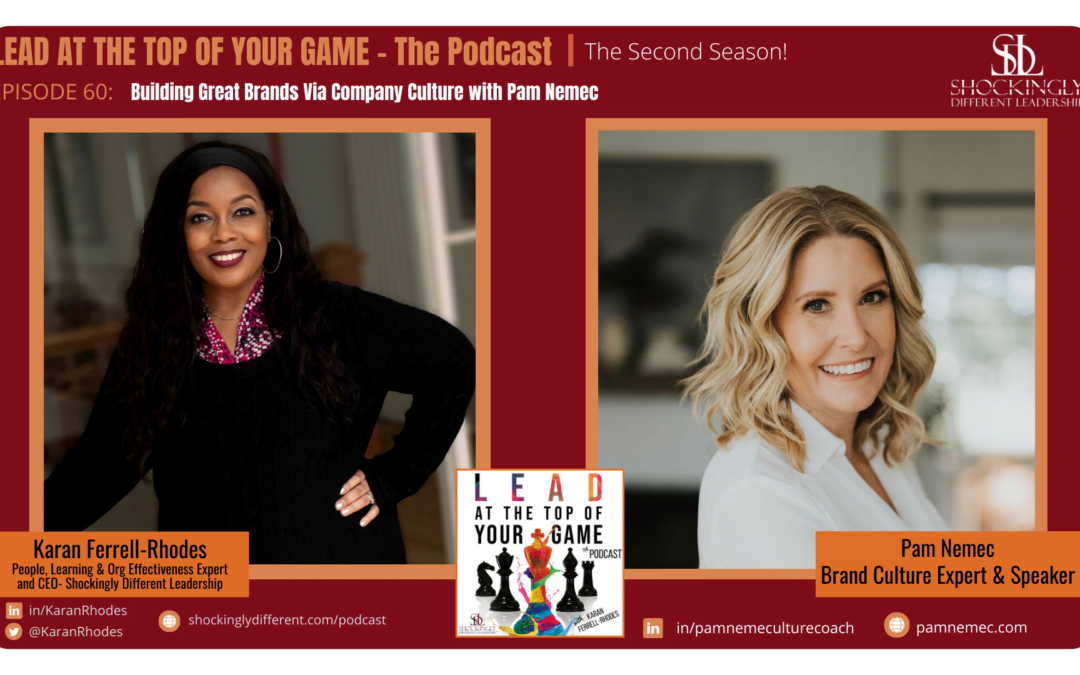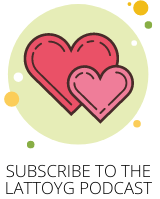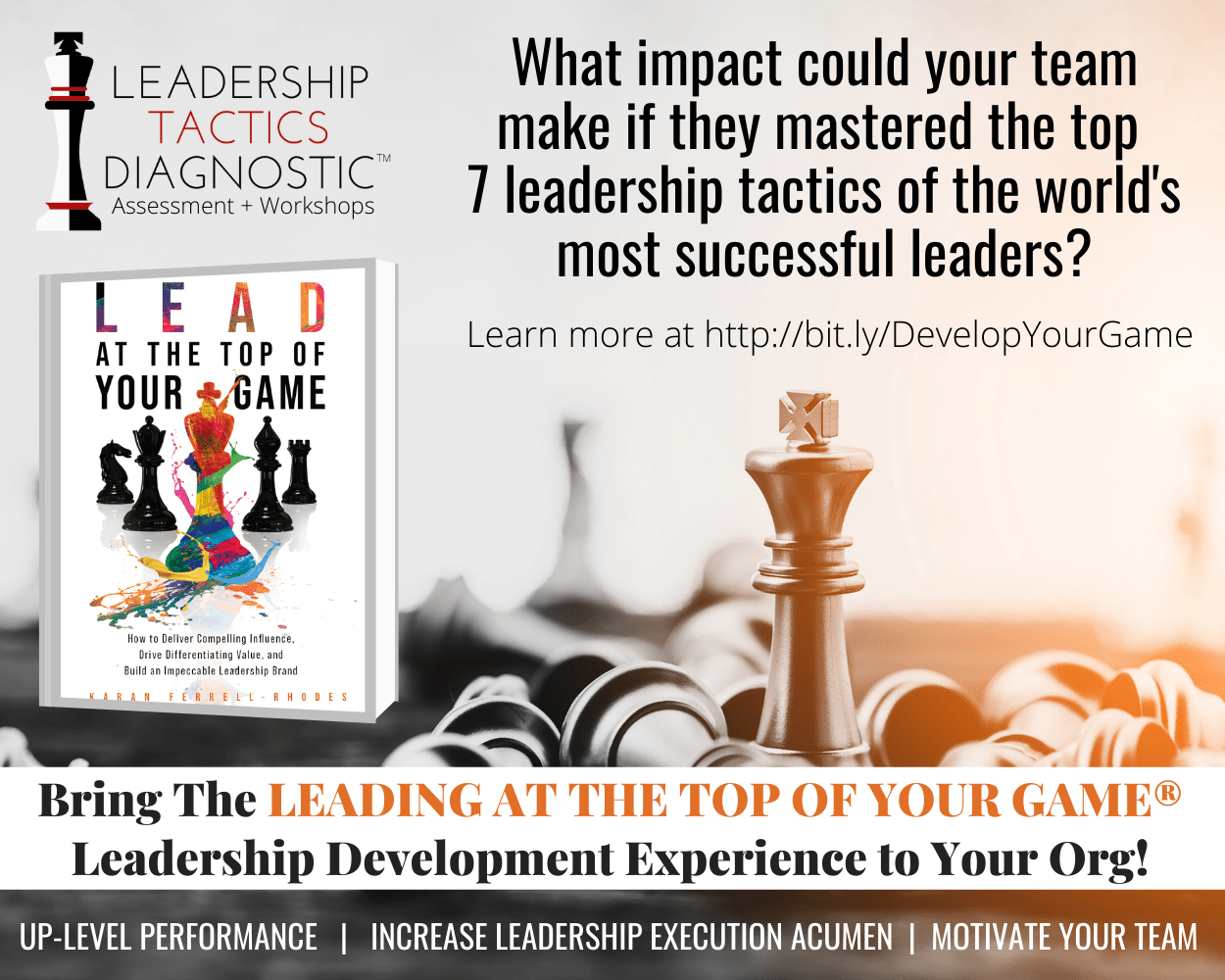IN THIS EPISODE, KARAN FERRELL-RHODES INTERVIEWS PAM NEMEC…
Brand culture is not just about what a brand sells; it’s about the invisible strings that tie its identity to its audience’s aspirations, values, and dreams. Today, we dive into the captivating world of brand culture with Pam Nemec. An esteemed brand culture expert, Pam’s influence extends far beyond the boardroom, touching the lives of over 50,000 employees and reaching the hearts of millions of customers.
Pam Nemec is the Founder and CEO of InsideOut, a distinguished leadership and communication consultancy dedicated to fostering people-centered organizational cultures. Pam is an esteemed brand culture expert and boasts a remarkable career spanning over two decades. Pam’s journey has been marked by her exemplary role in leading and cultivating a world-class culture for a multi-billion-dollar restaurant brand. Drawing upon her wealth of experience, she now extends her expertise to executive leaders, guiding them through the intricacies of scaling a growing business, engaging and retaining talent, and delivering unparalleled customer service.
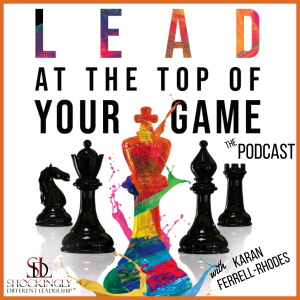
Posted by
SDL Media Team
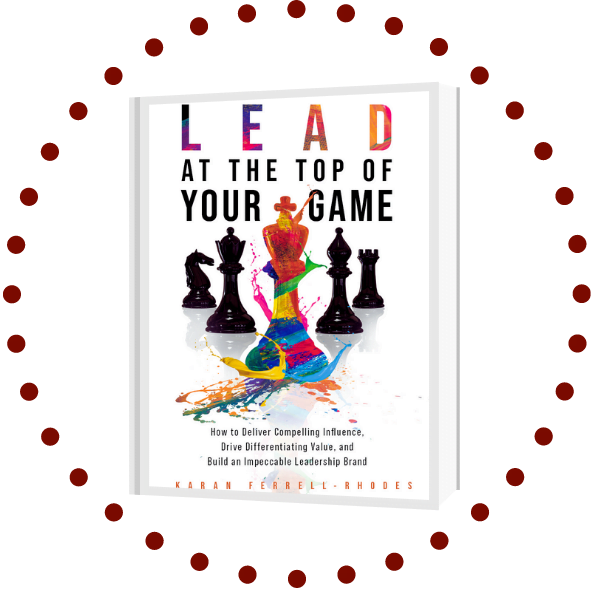
Rather view our video podcast?

WHAT TO LISTEN FOR:
- Is there space for employee and stakeholder voices in shaping the brand culture, and how does feedback factor in?
- When should a brand culture be adjusted, and where should a company start when significant changes occur?
- What are common missteps or misconceptions organizations make regarding brand culture, organizational culture, and communication?
- What’s the distinction between brand culture and organizational culture?
- How can companies build a strong company culture?
- How does employee involvement contribute to a positive company culture?
- How can effective communication help build a strong company culture?
“The misconception is that ‘culture’ means that you do everything the employee tells you to do.”
FEATURED TIMESTAMPS:
[05:22] Building Brand Magic
[07:22] Eight Steps to Building a Remarkable Brand Inside and Out
[14:37] How Collaborative Decision-Making Shapes Organizational Culture and Brand Success
[16:56] The Ongoing Evolution of Organizational Culture and the Power of Effective Communication
[22:39] Cultural Shifts: Preserving the Past While Paving the Way for the Future
[25:49] Employee Passion and Remarkable Acts in Building Brand Culture
[30:35] Signature Segment: Pam’s Tactics of Choice: Leading with Courageous Agility
[32:00] Signature Segment: Pam’s entry into the LATTOYG Playbook: Harmony in Leadership
[35:10] Signature Segment: Karan’s Take
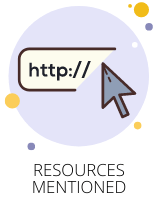
ABOUT PAM NEMEC:
As a brand culture expert and speaker, Pam Nemec has left an indelible mark on the landscape of organizational development. Her thought leadership in Brand Culture, executed through HR and Brand Communications lenses, has translated into the recruitment, retention, and well-being of over 50,000 employees. Over her illustrious 30-year career, she ascended to the head of HR, Brand Communications & Culture for Whataburger, a multi-billion-dollar Texas-based restaurant brand.
Pam’s contributions extend beyond the boardroom, reaching millions of customers through her innovative approaches to social media, public relations, employee communications, and human resources. Her trailblazing efforts in merging these disciplines have redefined industry standards, resulting in high employee engagement, increased retention rates, and an admired brand culture. Pam Nemec is widely recognized for her transformative impact, embodying the essence of a leader who envisions change and manifests it, leaving an enduring legacy in corporate culture and leadership.
LINKS FOR PAM:
Website: pamnemec.com
LinkedIn: linkedin.com/in/pamnemecculturecoach/
Facebook: facebook.com/PamNemecBrandCultureCoach/
Instagram: instagram.com/pam_nemec_/
Pam’s Speaking Services Link: pamnemec.com/services
PEOPLE AND RESOURCES MENTIONED:
ADDITIONAL RESOURCES FOR YOU:
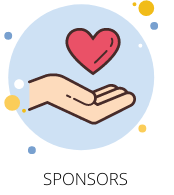
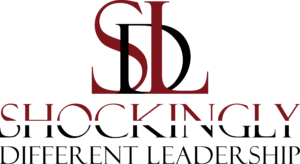
Episode Sponsor
This podcast episode is sponsored by Shockingly Different Leadership (SDL), the leader in on-demand People, Talent Development & Organizational Effectiveness professional services that up-level leader capability and optimize workforces to do their best work.
SDL is the go-to firm companies trust when needing to:
- supplement their in-house HR teams with contract or interim HR experts
- implement leadership development programs that demonstrate an immediate ROI and impact on the business

Click the plus button on the tab to access the written transcript:
Episode 60 | Building Great Brands Via Company Culture with Pam Nemec
Pam Nemec 00:00
One of the reasons I call it brand culture versus just organizational culture or company culture is this. I believe, with all my heart that great brands, remarkable brands, are built from the inside out. And if you get that inside culture right, your organizational culture buttoned up and connected and caring for each other and collaborating and communicating, then your brand culture will be impacted. Welcome to the “Lead at the Top of Your Game” podcast, where we equip you to more effectively lead your seat at any employer, business, or industry in which you choose to play. Each week, we help you sharpen your leadership acumen by cracking open the playbooks of dynamic leaders who are doing big things in their professional endeavors. And now, your host, leadership tactics, and organizational development expert, Karan Ferrell-Rhodes.
Karan Rhodes 01:06
Hey there superstars, this is Karan and welcome to another episode designed to help you better lead at the top of your game. You know, according to the Harvard Business Review, when companies fail to invest in their reputation or their employer brand, it actually cost them an average of $5,000 per employee, or the equivalent to spending 10% more per employee that they hire, or per contractor that they use. But Brandon is not just about the public face of the company. It is really about what it takes to create and maintain the type of work environment and values which drive and validate the public face of the company. In other words, it’s about how companies should build a great brand from the inside out. And on today’s show, we have a true expert in helping companies build tremendous employer brands via their culture and people strategy. Pam Nemec is the founder of Pam Nemec consulting. And she joins us today to talk to us about how so many leaders are looking for the magic bullet that will stop turnover and create employee loyalty. She actually debunked this myth of the magic bullet and shares how the true solution involves making a commitment to connecting and caring for every single employee every single day. And by building systems around the effort to hold everyone accountable to this bar to culture, you’re going to really enjoy this episode. And be sure to stay tuned for just two minutes after the episode to listen to my closing segment cost Karan’s take, where I share a tip on how to use insights from today’s episode to further sharpen your leadership acumen. And now enjoy the show. Hey there, superstars, this is Karan and welcome to another episode of the Lead at the Top of Your Game podcast. I am so pleased to have on today’s show, Miss Pam nimic, who is a brand culture expert. And she’s going to tell us what brand culture really is in just a moment. And she’s a speaker on this topic as well. And you know, her thought leadership around brand culture of the HR and brand Communications has led to recruiting, retaining and caring for over 50,000 employees and connecting with millions of customers over the course of her 20 year career, she has served as a senior vice president at a multibillion dollar restaurant brand. And she’s going to tell us some fantastic stories around her experiences. So welcome to the show. Pam.
Pam Nemec 03:48
Thank you, Karan. I’m excited about this conversation and I appreciate the invitation.
Karan Rhodes 03:52
Oh, absolutely. We’re so excited to have you. And you know, one of the reasons why I was tickled pink to invite you and have you on the podcast is that especially in the world of work and business, there are so many people and companies that are concerned around their different aspects of branding, whether it be an employer, brand organizational brand, you name it. And we as leaders really need to better understand that whole concept and so when I saw your work and what you speak on it, how you can sell it, I was like wow, this is a lady that definitely needs to be on the podcast. But before we peel back the layers of the onion into all of this good information. I’d love for our listeners to know just a little bit more about you on a personal level. So just as much as you feel comfortable. Would you mind sharing just a tad about your personal life and passions?
Pam Nemec 04:48
Well, thanks for that. I actually grew up in a really small town, South Texas and I have a big family that I was raised in and just love them to pieces And now I have two kids of my own. And a few bonus kids. I recently remarried in 2020.
Karan Rhodes 05:06
Oh, congratulations.
Pam Nemec 05:08
Thank you. And yeah, life, life is good. We and I’m loving being on my own and doing company, you know, helping other people build great brands through company culture. Oh, that is
Karan Rhodes 05:21
Oh, that is amazing. Well, it sounds like you have a very rich and fun personal life and professional life as well, I’m sure. So let’s delve a little bit into what your area of specialty is. And my first question for you is, can you tell us a little bit more about the difference between a brand culture and an organizational brand or an employer brand are all they all the same?
Pam Nemec 05:50
Well,…thanks for asking that. Because when I refer to brand culture, one of the reasons I call it brand culture versus just organizational culture, company culture is this, I believe, with all my heart, that great brands, remarkable brands are built from the inside out. And if you get that inside culture right, your organizational culture buttoned up and connected and caring for each other, and collaborating and communicating, then your brand culture will be impacted. That culture that you have on the inside, in your four walls of your company will start to permeate into the customer experience. And suddenly, the culture you have on the inside becomes the culture you have on the outside for customers. And real magic begins to happen for your brand. And its performance when that occurs. And so I’m very passionate about that connection, it because of the roles that I’ve held everything from public relations to being in marketing, to communications, largely throughout my career. And ultimately, HR, I’ve seen that when you can put all of that together and realize that your marketing, your brand, your culture inside and outside of the organization, it becomes extremely powerful. And that’s what I want to teach other leaders how to how to do and you can construct it into your company.
Karan Rhodes 07:21
Well, I must say, you know, I also having been an HR executive and Alicia developing executive, it’s sometimes easier said than done. Right. And I know you’ve had experience that, you know, a multibillion dollar company, which is huge. Can you share your experience on how you all were able to do that, especially in the restaurant and hospitality industry, which is a whole beast within itself?
Pam Nemec 07:48
Yeah, you know, at the time, when I was there helping to build a great brand, you know, we didn’t necessarily have a roadmap, we had good people, smart people figuring things out after I left is when I really sat step back and said, you know, we created something pretty special. And I was really glad to be part of it. And so I’ve since really taken a look at that, and the other, you know, 10 years of my experience prior to that, and said, What does it take to build a culture that people are proud of they are passionate about and they are inspired by? What does that take? And how do you take that culture and turn it into something special for customers. And so with that, I built a model that would help other companies build a communication system that could help them bring that to life. And it’s got it was seven staffs, I added one. So now we’ve got eight, but it just tends to focus leaders on where to spend their energy and their time, in order to build it for their own brands, their own companies. So the there’s eight steps,
Karan Rhodes 08:59
Would you mind sharing those eight steps with us real quick,
Pam Nemec 09:02
Not at all. Just to get started for leaders, the first thing that I asked them to do is to create the vision, not for just their company, because everyone will say I have the vision for my company. What I want them to think about is their culture. You know, how do you want people to describe your brand your culture? What do you want that to be about? How do you want your employees to talk about it? How do you want your customers to talk about it? You’ve got to get clear on that first in order to start constructing all the other parts. So that’s the first step. The second step is is now how are you going to coach it? How are you going to coach your leaders? How are you going to ensure they understand what your culture is and what those behaviors look like in your organization? And how do you bring that to life? The third thing that I found very important as it relates to building a culture of respect and teamwork, is you’ve got to construct collaboration into the organization. How are you working together on the day to day basis to discuss side, the next steps for the organization, how are you paying, you know, making sure that you are being respectful of all the departments, not just one, or not just one leader? How are you considering the impact to everyone and collaborating on the solution that will that will work for for all the folks involved? So that’s the third step. Fourth step is now you got to communicate your culture, you got a culture going now, you’ve got something special now, how are you going to communicate that to people? How are you going to reinforce it? What are the stories you’re going to tell? How are you going to bring it to life? How are you going to give people examples of what you want to see. Because if you can show them what you want, what happens is people start to go, hey, I want to be spotlighted. I want to be part of that. That was a really great story. And I want to do that too. And it helps people learn the behaviors that you want. So communicating that on a regular basis, having the platforms, the systems, the cadence, and the consistency for communication will really start to build something very cool within your your company. And then after that, and kind of during this you’re cultivating connection, so how are you pulling people together on a regular basis? And granted, it is difficult now, more than it has been in the past? Because obviously people are, you know, scattered about and working from home and all those sorts of things. So how are you intentionally building places, even if they’re virtual, to come together? Because people need those connections that people need that those relationships, and so making sure that you are cultivating that connection, not just for yourself and your direct reports, but for the entire company, the entire organization? How are you making sure people are coming together, and then, you know, commending the right behaviors. You know, I’ve seen in some organizations where they say they want this certain type of culture. But if a leader is hitting their numbers and performing and high performer, but they’re absolutely not demonstrating the right behaviors to get those numbers, I see them look the other way
Karan Rhodes 12:08
Right, they reward or for being bad right?
Pam Nemec 12:11
Yea. And so I think that’s dangerous to what you’re aspiring to be. And so you have to be consistent by commending the behaviors you want to see. And again, spotlight those, reward those put those as part of your program as far as reward and recognition. How are you doing that? Right, making sure you’re clear on that. And then you know, make sure you care about how people are feeling right, get the feedback, talk to ask people for their feedback, get those surveys and don’t get the surveys, I’m sure you’ve you’ve had its experience, get the results of the survey. And suddenly, there are people shutting down, they don’t want to hear the feedback. And I say you can’t let ego get in the way of improvement. And that feedback is so important to improving your organization. So try to be humble, try to be open to that feedback and really act on it. Don’t let those survey results sit. Because yes, you know, that’s, that’s not good, that performance either. And then the last piece, which is probably my favorite, and I call this if you can do all those other seven steps, this one you get to do and this is the cascade of the customer. This is where you have built something on the inside that’s so special, that now you can cascade it outside the organization to the customer. And they can feel the culture that you’ve created inside your organization. When you do these eight things, you start to see performance lift, because people are part of something bigger than themselves. They are part of the brand. They want to represent it. They want to make you proud. And so it’s just all of those things have to be there. And they have to their systems behind each of the steps. I make it sound really easy when I talk about a high level. But as you know, there are steps and within the steps you have to take to actually bring culture to life. So I’m not a believer, I don’t believe that culture is about perks and parties. I think it’s about a holistic approach to the way you connect, and you communicate throughout your organization. And that’s to me what ends up driving a healthy high performing culture.
Karan Rhodes 14:32
Just pure gems. I just we could drop the mic right now because those are just pure gems and I wholeheartedly agree having had over 20 years of experience in enterprise level organizations you are so spot on all of that. I have two questions that popped out for me in any of these steps. Is there room where employees or stakeholders have a voice I know you said something about feedback, but do they ever have a voice Ways in helping to create that brand, which would ultimately drive the culture.
Pam Nemec 15:05
Yes. I think that when I talk about collaboration, that’s where that lives, how are they part of building the new products? How are they part establishing new policy? How are they part of determining how they’re going to set up resource groups, they’re part of everything, they’re part of all the decisions. And what’s what’s also something I think is special is that when you can pull together all various levels of an organization, not just your top dogs, but you pull everyone together in a room and you you listen to them, you understand what that frontline is experiencing, you understand what that middle manager is experiencing, and you understand the top, that’s where you can start to build something that is a lot more thorough, and people, as you know, when they have that opportunity to be part of the decision making part of that creation part of the innovation. I mean, now you want to see it succeed. Absolutely. You were part of it, right? It’s like we’re all in the same boat,
Karan Rhodes 16:09
where you have that buy in and you’re committed, you don’t want to fail, you’re committed to it at that point.
Pam Nemec 16:15
Absolutely. So I think that’s something that is such a critical component of what I call culture is, you know, in order to make people care, you’ve got to involve them, you’ve got to communicate to them, you have to collaborate with them. And you’ve got to make sure that they know that your opinion, your contribution is valued, it’s appreciated, so much so that we have built a whole system around making sure you’re in the room, when we’re talking about this innovation, when we’re talking about these new products, when we’re talking about anything related to improving the company makes such a difference.
Karan Rhodes 16:51
And you know, it’s also key Pam, I’ve seen and you can poke holes in this if you don’t agree, sometimes there’s a misconception that you do all this work and snap your fingers and the culture will immediately thrive. In my experience, it has been an ongoing evolution, you sit you do all your eight steps to help lay the groundwork. But it’s something that has to be nurtured continuously and reinforced continuously. Am I dreaming this? Or do you have another perspective?
Pam Nemec 17:22
Oh, absolutely not. I think that it is the you know, the seven plus one, eight steps that I’ve created is all about establishing the foundation, you create the foundation. And then within that foundation, you create the processes and the systems that are nurturing, reinforcing, and ensuring that the behaviors that you want to see within your culture and in your organization are actually being demonstrated. And I think that a lot of leaders are right now specifically because they’re dealing with so much, you know, are looking for this magic bullet. This one, the one thing, I’m going to do this one thing, and then everybody’s going to be happy. So they’re developing programs, or they’re increasing compensation. They’re improving their benefits. And I don’t think that’s wrong. Obviously, you have to do that. But everybody’s doing that.
Karan Rhodes 18:14
That’s just part of the people strategy. And it does add to the culture. But that’s not the lens that you’re talking about when you’re building Yeah,
Pam Nemec 18:23
Yeah. To me, it’s like, how are you promoting the benefits? How are you promoting the fact that you have new resource groups? How are you promoting the people? How are you promoting the products inside your organization, not just outside, because everything you’re doing within the company has to be they have to know about it, or they’re not connected to it. And so the communication element of the process, that the systems, the platform, the way you go about communicating to people is actually really taking a holistic approach to all the great stuff you’ve got going on in your organization. And you know, I say this to people, do you even have somebody if you’re a large organization, you might, but if you’re maybe like growing, you may not have somebody specifically focused on communication. That is their role. That is what their lenses, that’s what they think about 24/7, right? If you don’t have it, you might want it right, because that’s the person that’s going to make you look really good. And make your brand come to life because they’re looking for stories. They’re looking for people that represent that culture. They’re looking for performance, talk about your performance, talk about the goals, do people know what’s going on? Is it connected all the way through? Is it cascading all the way through your organization? You know, it’s a lot of work to communicate effectively. And, and I think a lot of times companies make the mistake to say I’ll give that to my assistant and she’ll send out that email for me, or I’ll give that to somebody in HR who’s already juggling 90 other things. And they’ll do that, I’ve found that you need a focused team that can do nothing, but communicate culture, communicate operations, all the things that are going on. Operationally, I just think that’s way more effective than trying to find somebody who has an extra hour in their day to develop all the communication that probably should have been going out weeks ago, right.
Karan Rhodes 20:26
And, you know, as leaders and listeners, I hope you’re listening to Pam, because someone that is totally focused on this either full time or for 80% of their job is important, because it will increase that know, like trust factor for every stakeholder in the company, whether it be employees, or customers, or vendors, or what have you. And that know, like trust factor is what will give you that competitive edge when you’re going against your peers and your industry or market or job function or what have you, or whatever it is. So definitely, if you don’t have someone internally, it might be worth, you know, hiring a consultant, you know, to help you until you can afford a full time person, I’m just saying, you know.
Pam Nemec 21:19
It’s a good point. And you see you said something, and I just read an article about it, too, is how important trust is in an organization. You know, and and I think communication that’s reliable and candid and honest, builds trust. And and I think it also it builds trust inside your organization, it builds trust with customers as well. And so there’s such an a key to performance. And the other. The other thing you mentioned was suppliers. And I didn’t talk about this, but I think that your suppliers, your partners, the people that help you run your company, they should feel as respected as if an employee of the company, those folks are so so important, and so critical to your operation. How are you connecting and showing that you care about them? How are you showing your appreciation for them? You know, some might say, well, we pay them a lot of money. And they should do that, because we pay them a lot of money. Well, that’s fine, you can go with that approach. But I can tell you catch a lot more flies with honey, as I say, and, you know, showing those folks respect, I have seen firsthand that they will go above and beyond for you, when you are in a pinch, they will go out of their way to help you maybe even over another brand, because of the way your people have treated them. And that’s part of culture too.
Karan Rhodes 22:39
That is absolutely part of culture. And you know, there’s that argument that you’re paying your employees a fair wage for their expertise and their expertise. The same thing with your vendors, partners or suppliers, you’re paying them a fair fee for augmenting or adding to your business. But to your point, you should treat them similarly. So that they’ll go over and beyond. I’m just curious. Pam, do you have any thoughts about times when a brand culture maybe needs to be course corrected or be tweaked? Sometimes that happens when there are major changes in the industry or major things are going on in the business? That what are your thoughts about if a company finds themselves in that situation where they need to tweak their brand culture? What should they do? Where should they start?
Pam Nemec 23:31
I think they need to revisit that vision. You know, that’s one of the first steps but go back to the beginning. And take another look at your vision because I’ve seen companies where they’ve been have been steady, just steady, slow growth for a while. But then suddenly, they’re going to grow faster. So they need more innovation. They need people to be more agile. They need people to be more looking at the operation of the organization to say how are we going to make sure that we can do this quickly. It when maybe in the past, things have moved slower when you’re doing that you got to reset the expectation. You don’t have to as my mama used to say throw out the baby with the bathwater you just evolve it right. But if you if you’ve missed the step, what happens is everyone still live in in the old culture thinking that that’s the way but you’ve never really shown them the new way. You’ve never said how can we preserve the history and the great parts of what God is where we were where we are today, while evolving the culture to get us where we need to go in a way that feels respectful to both the history and the future. I think that’s another thing you got to be careful but you do want to make the mistake of disrespecting the history and the people that got you where you you know, and I think that sometimes people get in that mode of I’ve got to make that bad. So this new thing can be good and I disagree with that approach because When you do that all those folks that had helped get you there are feeling like well, what, wait a minute, I worked really hard to do this. And now you’re saying that’s, that’s dumb. And this is smart, don’t pit those two things together, make it an evolution and explain that that is something exciting. And this is how the, all the great things you’re going to take forward into the future of the organization. And I think when you can do that, now you’re inspiring people. And you are respecting them once again and saying, I get you and I’m going to hear what you have to say, now, let me figure out how I can make sure I preserve that going forward. Because if you just trample the past to get to the future, it doesn’t feel good for those people who built the past.
Karan Rhodes 25:49
You’re so right. And I’m just curious, when you go in and consult with organizations, what is one of the biggest missteps or misconceptions that they either make or have?
Pam Nemec 26:02
Well, I think that one of the biggest things, one of the biggest misconceptions is that when you start talking about culture, the word culture, everybody’s wall starts to kind of come up, right? Yeah, it does. I like oh, here we go. Again, talking about culture, I’m gonna have to do everything the employees asked me to do. And I’m just sick of hearing about it, I get it. I know, that’s what they’re thinking, right? But that’s why I’m like the misconception is that culture means you do everything the employee tells you to do. That’s the misconception. That is not what I believe. What I believe is that you build a communication system that all the employees want to be part of. And when you do that, you will build a great brand, and that we will build performance. That’s what I tried to explain to them was like, no, no, no, no, it’s much less a whole lot. It’s, I say, the things that I believe in systems and the processes that actually protect your culture and promote it. That doesn’t sound real sexy, right? People would much rather talk about the parties, and then the parks and, and I get that and that’s part of culture too. But it’s not what is foundational to building something that is truly remarkable that happens from the inside out. And it takes the work and it takes commitment. And to your point, it takes constantly reinforcing it, and fostering the kind of company you really want to build.
Karan Rhodes 27:32
And Pam, you’ve got to share the couple of examples of employees that the multibillion dollar company, some of the things that they did to express how passionate they were about the brand culture, what’s a couple of things?
Pam Nemec 27:46
You know, is one of my favorite parts of working there, the people in operations at the restaurant level, were so passionate about the company, that they would even tattoo the brand on their arm, they would, for a big event we would have every two years, we had this huge conference, and everybody came together. And we actually had almost like a burger Olympics. And at this event, we had people that would shave the logo into the side of their hair is to express their love and excitement for the brand. And I’ve also seen where our team members had long standing customers, we had one point we had an 89 year old mom and a woman, she wasn’t a mom, actually, she was actually single and had been for years. And she’d always come in to the restaurant every morning for breakfast. And so the whole team knew her. And it was her birthday. And the team had heard that her TV broke. And I guess she had just mentioned it to them. Because again, she was like family, they she came in all the time. And the team secretly took up a collection of their own money. These are these are restaurant team members save their money and bought her a TV for her birthday. And that’s what I mean about inside out, right, that is a culture that is inside and his permeated all the way down to the frontline. And because of that it is actually being shared with the customer. And that’s the inside out, right. And so you have to know that the leadership has to be there, the communication has to be there, the connection has to be there first, inside that those four walls of that restaurant and inside the four walls of that company. Otherwise, how on earth will it ever get shared to the customer? And that’s what was so special about getting to see that and getting out you know, I had a front row seat to it and I got to do the public relations, the social media, we had
Karan Rhodes 29:49
Her social media gold right there. Let me just say
Pam Nemec 29:53
absolutely. And so you just you just we just got to hear about these amazing stories and then share those inside and then shares those outside the company. And it was just it became just this whole machine honestly of amazing experiences and stories. And so yeah, it was a very, very cool thing to be part of.
Karan Rhodes 30:14
That is just tremendous. Well, I blinked and we are close to time, but I have a few more questions for you. Before we wrap up. One of the things we’d love to ask guests, as you know, I wrote a book on leadership and action. And out of it came seven tactics that exemplar leaders always do when they’re executing any leadership effort. And we love to ask our guests, you know, which one of the seven really resonated for you, and you were so kind enough to share too, but I think we only have time for one, one of them was courageous agility. And for my new listeners out there, um, courageous agility is all about having the courage and the fortitude to stand up for you what you believe in and do what’s right, and still move forward, even if the features is uncertain or unclear. And so Pam, I were just curious of why that one in particular stood out for you.
Pam Nemec 31:06
You know, I think that throughout my 30 year career with various organizations, there’s always been, there’s always times where things are uncertain, or your team is unsure, the path isn’t clear, right. And I think that you have to, as a leader, be the courageous one that can keep going keep moving forward, regardless of that, maybe that unclear path. And you have to show the way in doing that sometimes, you have to speak up on behalf of your team, or on behalf of your organization to make sure that other important aspects are being considered before that decisions made. And so I think that when I read that, I was like, Yeah, that’s me, I do that I am okay, operating in the gray. I like to lead people forward even when things are a little unsure. And so yeah, that one definitely resonated with me.
Karan Rhodes 32:00
And then my last question for you, Miss Pam is, what does it take for you to lead at the top of your game?
Pam Nemec 32:06
I think that in order to lead at the top of my game, I have to have balance in my life. I feel like when things aren’t going well, personally, say my kids are mad at me for something that bothers me, right? And it gets in my head. And so for me, it’s all about, I say balance, it’s really harmony, having my life in harmony, to where my kids are good, my grandbabies are good, my work is going well. I’m contributing to the people that are my clients, and then helping them move forward. And I feel like I’m making a difference in this world. That to me is when I’m leading at the top of my game, and I sure I don’t do it every single day. But that is that’s the goal. Right?
Karan Rhodes 32:53
Well, that’s what you choose to strive for every single day. Well, awesome. Well, Pam, this has been so tremendous of an episode. And I mean, chock full of nuggets from start to finish, we will have all the information for our listeners about you in the show notes. But I love to give let you have a voice to where people can find you. And please know audience members, although she gave us those eight, you really need to go on her website, because there is a lot of meat under each one of those. And there’s deep consulting that happens under eight. So where can they find you, Pam,
Pam Nemec 33:29
thanks for this opportunity. Karan. Honestly, all I can do I can do I offer 45 minutes of free consultation. So if somebody just wants to call and just chat through what maybe they’re experiencing in their own organization, maybe they have a quick question. Maybe they have something they just are like, I don’t know if she can help me, but maybe she can. It’s free. I’m not going to bother you if you say you know what, I’m not ready for that. But you know, long term, but you know, if you want to give me a call, let’s chat about your company culture and where you see the need. I’m happy to do that. And you can schedule that on my website by just clicking this free consultation link, and it’ll take you to my calendar and you can sign up. It’s super easy.
Karan Rhodes 34:12
Nice. And you want to say your website again?
Pam Nemec 34:15
Yeah, it’s www Pamnemec.com
Karan Rhodes 34:17
nemec.com. And it’s N as in Nancy, E M. E. C.? That’s where we press so but don’t worry about it, listeners. It’ll be in the show notes. Well, thank you so much, Pam, for being on this episode. It was fantastic.
Pam Nemec 34:34
It was so fun. And thanks for the conversation. You made this so easy. And I just love it.
Karan Rhodes 34:40
Thank you. And thank you to listeners for tuning in. And you know, we’ll have another dynamic episode for you next week. So see you next week. Take care. Well, I hope you enjoyed our conversation today with Pam Nemec founder of Pam Nemec Consulting. Links to her bio her entry into our leadership playbook. And additional resources can be found in the show notes both on your favorite podcast platform of choice, and on the web at www.leadyourgamepodcast.com. And now, we’re Karen’s take on today’s topic of building great employer brands. You know, during my professional career, I’ve had deep experience in attempting to build and maintain strong employer brands. I mean, heck, I believed in it so much, and the impact that can be made that I included it as part of my research, and wrote about it extensively in my book Lead at the Top of Your Game. So today, I’m going to take from my own research and remind you of the seven tactics which most influence building a strong personal brand. The first is leading with intellectual horsepower. This is all about using your areas of expertise to peek around corners in order to spot trends, connect the dots and identify new areas of opportunities that others miss. The second tactic is called leading with courageous agility. This is all about having the fortitude to take calculated risks and to stand up for what you believe in and do the right thing, even when the consequences or feature is unclear. The third tactic is called leading with a drive for results. This is about being persistent and tenacious and ensuring that your goals are achieved. The fourth tactic is called leading with executive presence. This is all about making clear and convincing either oral or written presentations in order to influence and lead others. The sixth tactic is called leading with strategic decision making. This is all about making good decisions yourself, or leading a good decision making process based on your top strategic goals. And I’m sorry, I think I call that the sixth is actually the fifth, the real sixth tactic is leading with intrapreneurship. This is all about building the organization by identifying new opportunities to develop or improve operations, products or services. And then the sixth and final tactic is leading with stakeholder savvy. This is all about assessing interpersonal dynamics in order to operate effectively in a variety of social situations. This is kind of the kin and sister tactic to emotional intelligence. Well, those are the seven I hope you do pick up a copy of my book to learn more about them and how to apply them daily in your work life. And I hope the info on today’s show helps you jumpstart your thinking around building leadership and employ your brand. If you’d like to learn more about leadership and action, we have a ton more information on our programs on the web at developing your game.com. Thanks again for joining this episode. And please remember to subscribe and share the podcast with just 1 friend so that they too can lead at the top of their game. Thanks so much for listening and see you next week. And that’s our show for today. Thank you for listening to the lead at the top of your game podcast, where we help you lead your seat at any employer, business, or industry in which you choose to play. You can check out the show notes, additional episodes, and bonus resources, and also submit guest recommendations on our website at leadyourgamepodcast.com. You can follow me on Twitter, Facebook, Instagram, and LinkedIn by searching for the name Karan Rhodes with Karan being spelled K a r a n. And if you like the show, the greatest gift you can give would be to subscribe and leave a rating on your podcast platform of choice. This podcast has been a production of Shockingly Different Leadership, a global consultancy which helps organizations execute their people, talent development, and organizational effectiveness initiatives on an on-demand, project, or contract basis. Huge thanks to our production and editing team for a job well done. Goodbye for now.

Want to be a LATTOYG Podcast Guest?

Want Karan to be Your Podcast Guest?

Want to be a Podcast Sponsor/Advertiser?
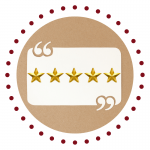
Like the Show? Please Leave a Review
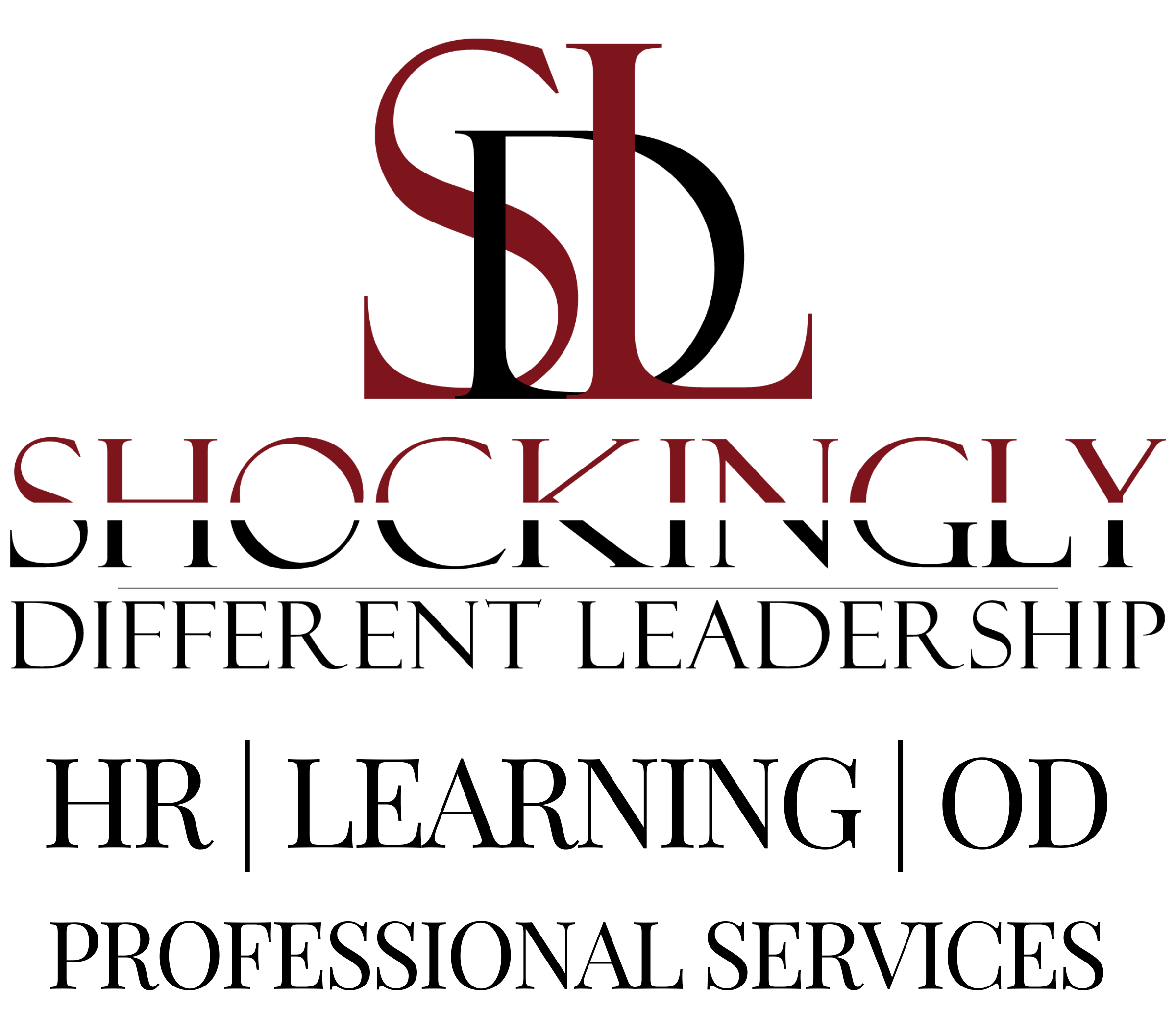
#KeepInTouch
via our podcast alerts
Subscribe now to discover why thousands of monthly listeners who are passionate about doing their best work prioritize time each week to listen to the Lead at the Top of Your Game podcast.
#AboutSDL
Shockingly Different Leadership is a human capital professional services consultancy that provides organizations access to the best consulting expertise in the areas of Talent Development, Organizational Development, and Human Resources – on an on-demand, project, or contract basis.
#WhereToFindUs
MAILING
4480-H South Cobb Drive
PMB 219
Smyrna, GA 30080
PHYSICAL
2121 NewMarket Parkway
Ste. 108
Marietta, GA 30067
#ContactOptions
Customer Service Email:
service@shockinglydifferent.com
Call or Text:
770-384-1103
#Office Hours
MON-FRI
8:30 AM – 6:30 PM
Weekends By Appointment

